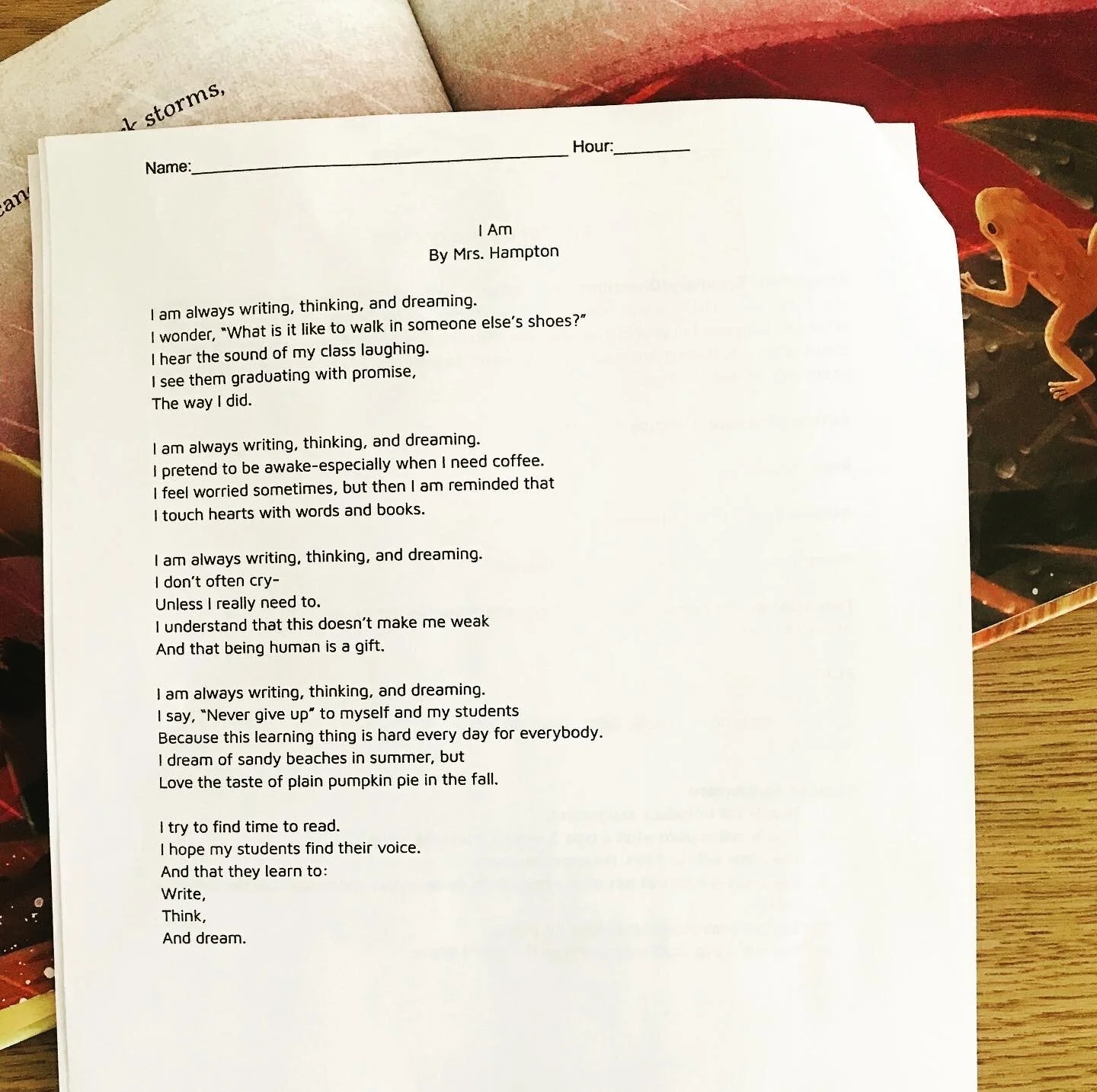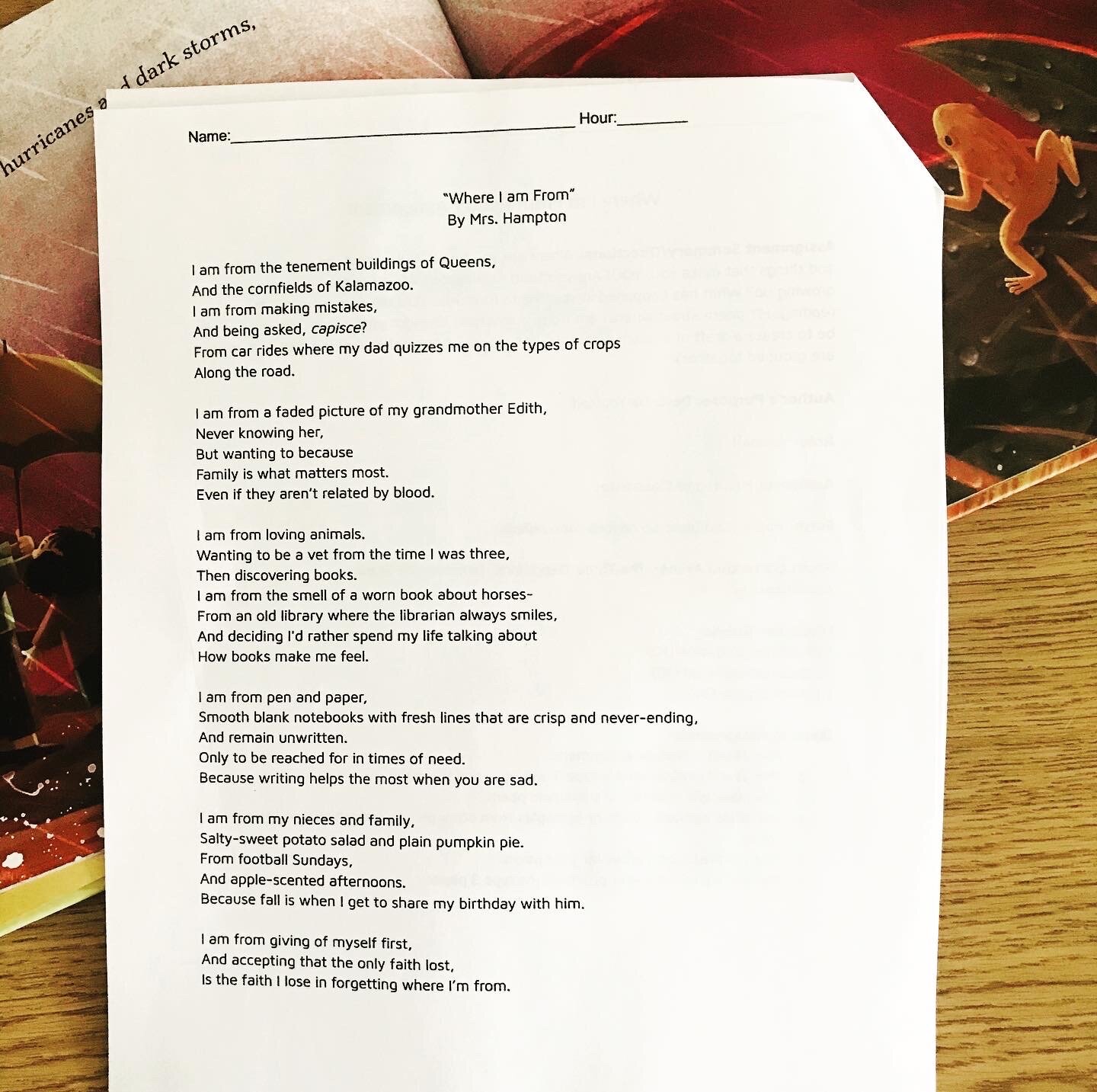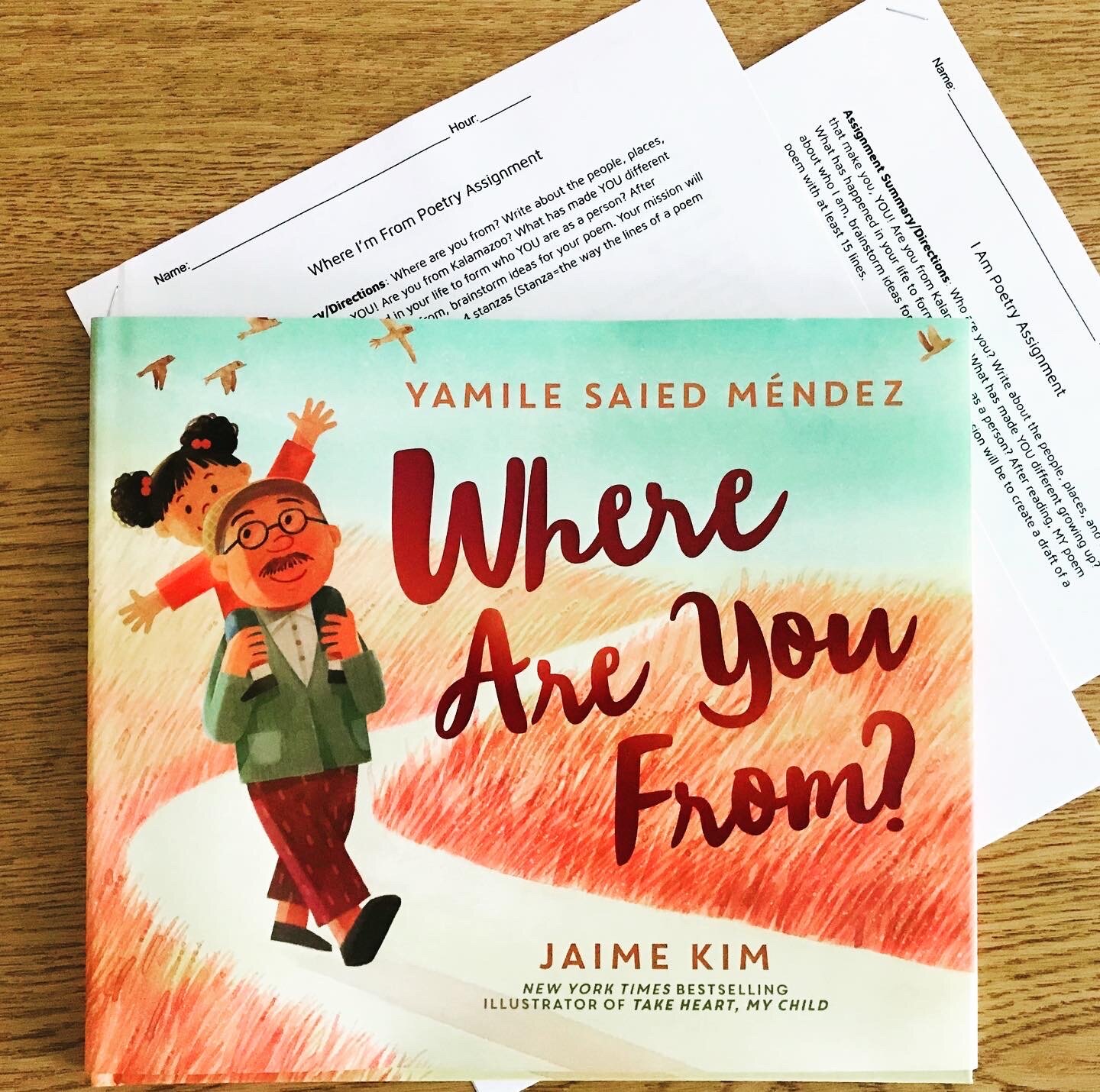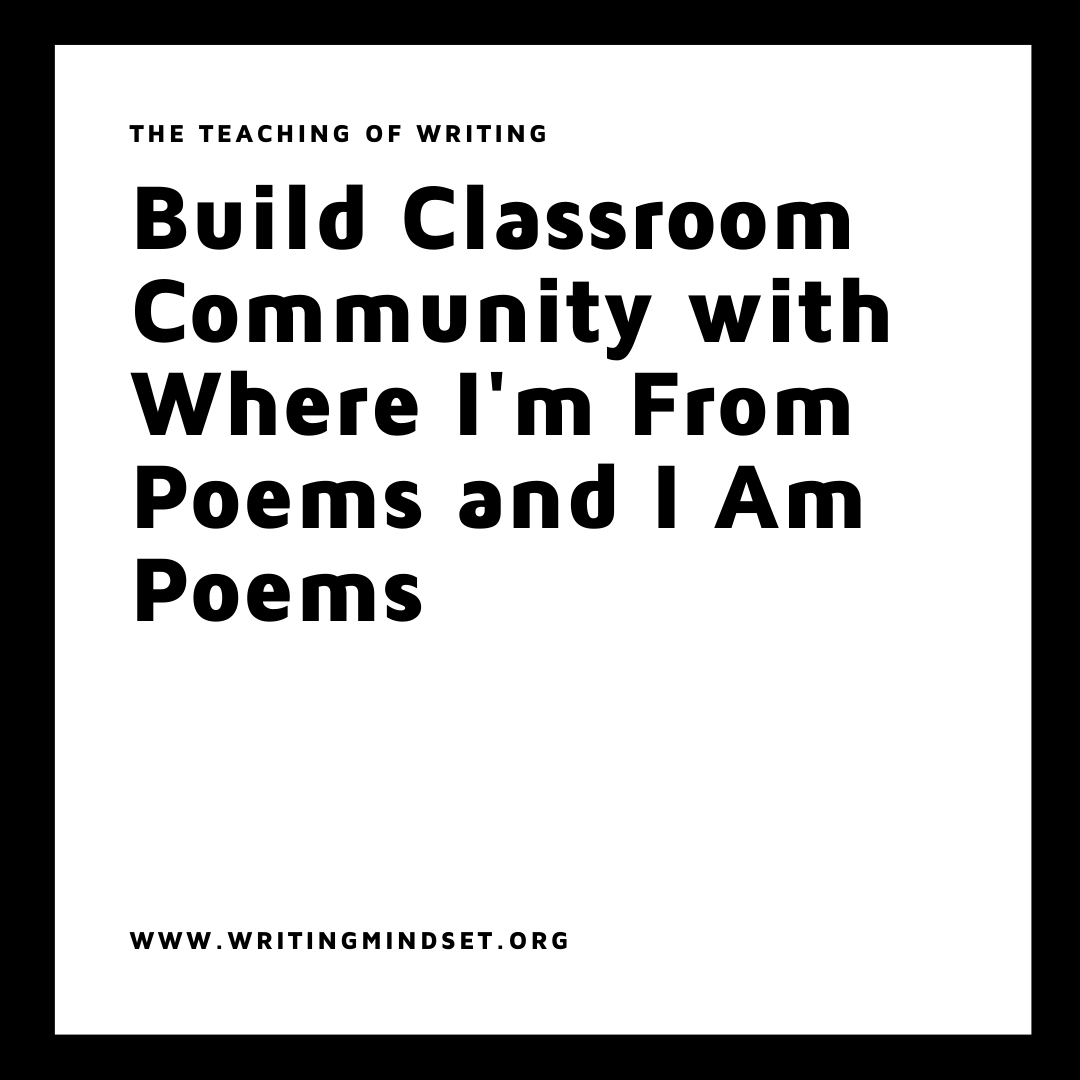Build Classroom Community with Where I'm From Poems and I Am Poems
“But, Mrs. Hampton…I Don’t Really Write Poetry”
Disclosure: Writing Mindset only endorses things that I’ve personally used, something similar, or come highly recommended by trusted peers. If you grab anything I mention using a referral link, I may get a small commission. However, there’s no extra cost to you. If you would like to learn more, please visit the privacy policy and disclosure page.
I always end the first six weeks of school with narrative poetry. 1.) It is a mindset thing. I want to show the kids who don’t think they can write poetry that they indeed can write poetry. 2.) It is an excellent way to get to know students better. We may think we know each other after six weeks, but in reality, we have spent a lot of that time on testing and expectations. it is powerful to know our students and let our students know who we are as people. Cue Where I’m From Poems and I Am Poems. I use this form of poetry from George Ella Lyon each year to help build community and access important identity work. This post includes all of the assignment materials and my step-by-step process including mentor texts and a read-aloud.
The Materials
Please feel free to click the links to my Google Docs and make copies for your own use. My own poetry is linked with each assignment, so you could simply delete my poem and replace it with your own poetry for students to study. I like to provide templates for my students who hesitate to begin. This makes poetry less scary. I sometimes find that Where I’m From Poems can be quite abstract in ideas, so many students will balk at some of the examples. Where I’m From Poems and I Am Poems are fundamentally the same. We, as teachers, gain background knowledge about where our students have been, who they are now, and where they are going. The goal is to get students to share about themselves, and both assignments accomplish this mission.
Where I’m From Poems
Where I’m From Poetry Assignment
Where I’m From Poetry Mentors/Examples/PDF Document
Where I’m From Poem Template (Freeology)
I Am Poems
I Am Poem Template (Freeology)
The Steps
STEP 1: SHARE THE ASSIGNMENT DIRECTIONS. SHARE YOUR OWN POEM.
I like to be the first one to share my poem so I can show my students that this is an environment that is safe and welcoming. I read my poem, and then I invite them to ask questions about me that they may have. I always get some students to hone in on some important detail in the poem that other students might have missed. Even though a lot has changed since I wrote about teaching this type of poetry in 2017, I still always start with this important first step. Here are both my I Am Poem and my Where I’m From Poem:
STEP 2: SHARE EXAMPLES OF POEMS IN COMMUNICATORS.
I like to break up the directions by getting students up out of their seats, moving, and talking. I put 17-18 examples and mentor poems in communicators and share them around the room. We notice the writing just like we do during the mentor text process. You could also hang these poems around the room and do a type of gallery walk where students could do some moving and noticing as well.
Where I’m From Poetry Mentors/Examples
STEP 3: READ ALOUD “WHERE ARE YOU FROM?” BY YAMILE SAIED MENDEZ.
This book was featured in my blog post, “The 15 Diverse Picture Books I Plan on Reading Aloud in My Middle School Classroom to Kick Off the School Year!” because it has a natural connection to Where I’m From Poems and I Am Poems. Kids loved the images in this book. I like to play the YouTube videos on silent whenever I can so I can walk around the room (while reading) and everyone can still see the pictures. The page in this book with the frog is my favorite!
Other Mentor Texts
Where We Come From by John Coy, Shannon Gibney, Sun Yung Shin, and Diane Wilson
We come from stardust
our bodies made of ancient elements.
We come from single cells
evolving over billions of years.
We come from place, language, and spirit.
And each of us comes from story.
We all come from something. In this unique collaboration, four authors lyrically explore where they each come from―literally and metaphorically―as well as what unites all of us as humans. Weaving together their individual stories, they explore place, ancestors, movement, struggle, determination, and hope.
Powerful poetic text and richly layered illustrations bring together past and present, creating an accessible and visually striking look at family, history, and identity.
I’m From by Gary R. Gray Jr. and Oge Mora
A poetic, heartwarming ode to the small, defining moments of a boy’s life, by a critically acclaimed debut author and a Caldecott Honoree. For fans of Last Stop on Market Street.
Early morning wakeups and homemade pancakes,
Raucous bus rides and schoolyard games,
Family games and bedtime rituals…
These are the small moments that shape a child’s day. I’m From is an invitation into the vivid world of one small boy, a poetic account of all the people and places and things that shape who he is and define where he is from.
STEP 4: BRAINSTORM IDEAS.
I like to use thinking maps for brainstorming, but any form of pre-writing helps to make poetry less intimidating. For my inclusion classes, I clarified some brainstorming areas:
People
Places
Things
Feelings
Personality
Hobbies
STEP 5: DRAFT POEMS. PROVIDE TEMPLATES IF NEEDED.
As we begin drafting time, I provide the option of a template if needed. Some teachers might say this limits the creativity of young writers, but particularly at this stage of the game in the school year, I am trying to get to know them and their ideas. Templates can put a striving writer at ease, and they can help provide clarity to anyone not understanding the material. I do have some students opt-out of the template as well. Before school started this year, I wrote a blog post called “10 Strategies for Reading and Writing Conferences to Try This School Year.” This part of the writing process is the step that fits the best with writing conferences. During this time, I am walking around with my clipboard marking off who is doing what. Here are some examples of notes:
Writing seems natural, easy
Not hesitating to try or start
Struggling with ideas
Needs intervention
STEP 6: WE SHARE AND REVISE.
Even though this activity helps me get to know students, we also need to know each other! I like to have students share with each other and use a skill from mentor text work to revise their drafts. This is also a great way to introduce peer revision to students. We can look at our poems, and I can give them 2-3 items to focus on in their drafts.
STEP 7: WE CHOOSE OUR FAVORITE LINE FROM OUR POEMS TO CREATE ONE BIG CLASS POEM.
The class poem will stay up all year as a reminder of who we are and where we are going. I like to let students self-select their favorite lines, and then we “experience” the class poem by reading our favorite lines out loud all at one time. This is a powerful moment in our classroom as it unifies the class of writers as people who went through the same experience. It also makes a pretty awesome display for reminders of writing greatness on the not so great days.








